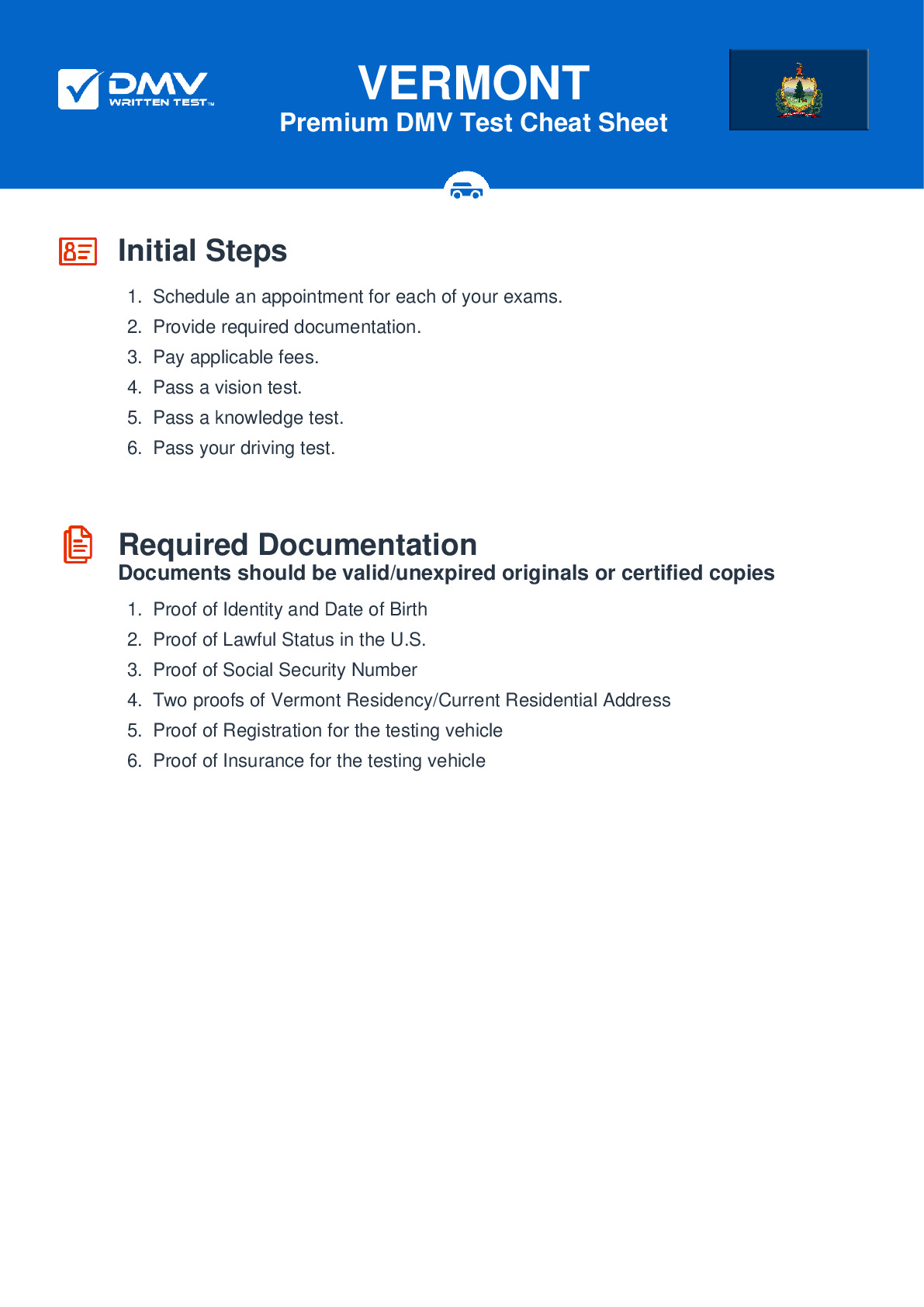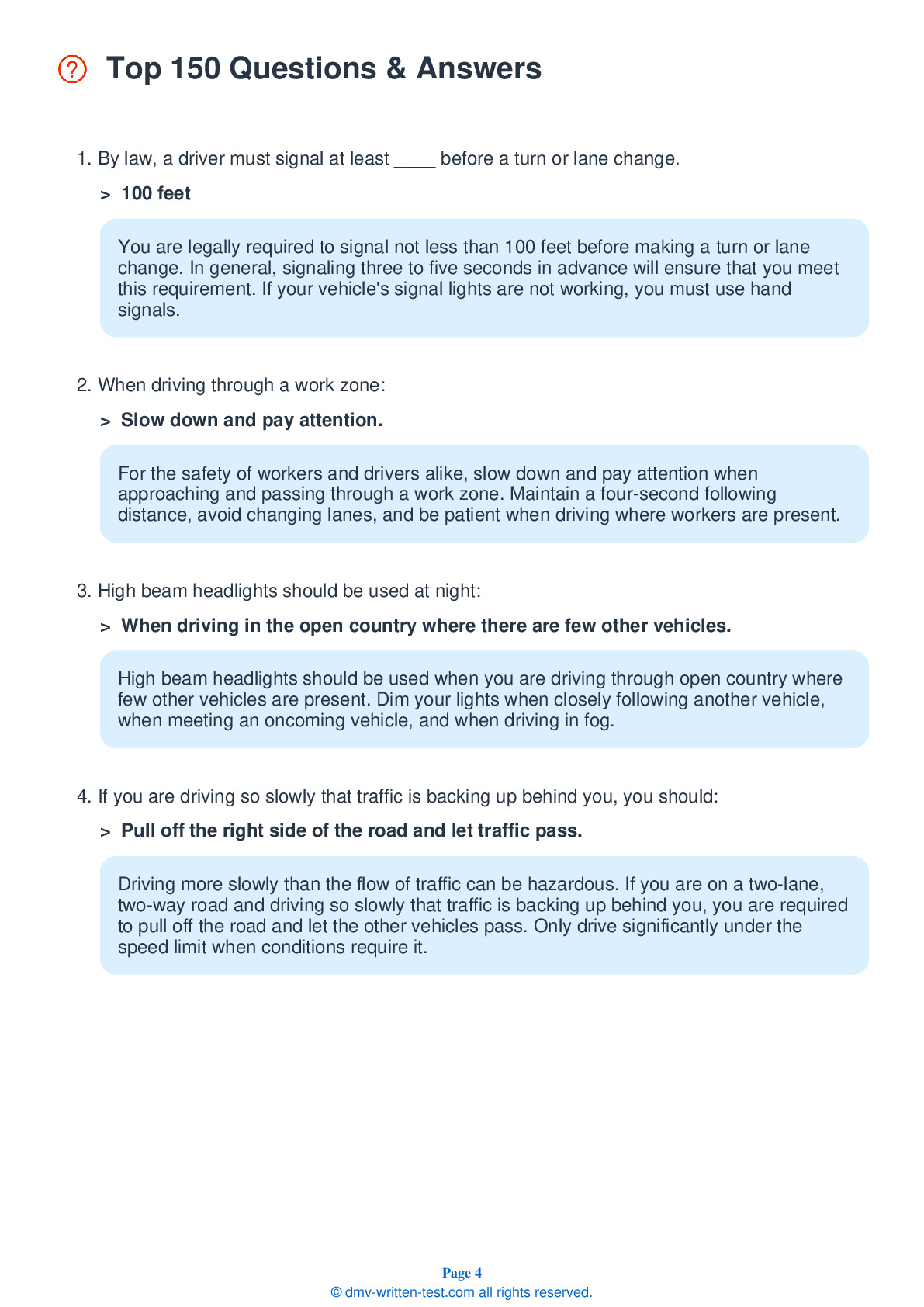2025 Vermont Permit Test 24
The following questions are from real DMV written tests. These are some of the actual permit questions you will face in Vermont. Each permit practice test question has three answer choices. Select one answer for each question and select "grade this section." You can find this button at the bottom of the drivers license quiz. For a complete list of questions and answers for Vermont please visit https://cheat-sheets.dmv-written-test.com/en/vermont/car.
Number of Tests
Number of Question
Passing Score
14. When merging onto a freeway, it is usually best to:
Explanation
When entering a freeway, use the on-ramp to accelerate to the speed of freeway traffic so you can blend in smoothly and safely. Entering traffic must yield to traffic already on the freeway.
15. Your vehicle's stopping distance increases when stopping:
Explanation
Stopping distances increase on wet or icy roads. Stopping distances also increase on road surfaces covered in loose gravel or stones.
16. Which of the following is a safe way to drive through a curve?
Explanation
You should slow down as you enter a curve and increase your speed gradually as you exit. Increasing your speed as you enter a curve will make it more difficult to control your vehicle.
17. This road sign means:

Explanation
This sign is used with a traffic signal to tell drivers that left-turning traffic does not have the right-of-way and must instead wait for oncoming traffic to clear.
18. A work zone:
Explanation
Work zones are often stationary, but they may also be present in the form of moving vehicles striping lines, mowing, or removing snow. Work zones are marked by orange signs with black lettering or symbols. Slow down and pay extra attention when approaching or driving through a work zone.
19. You should be cautious when passing a bicycle because:
Explanation
You should always be cautious when passing a bicycle because the cyclist may have to swerve into traffic to avoid an object on the road. Always be particularly careful when driving near bicyclists.
20. An approaching driver fails to dim their high beam headlights. Where should you look?
Explanation




